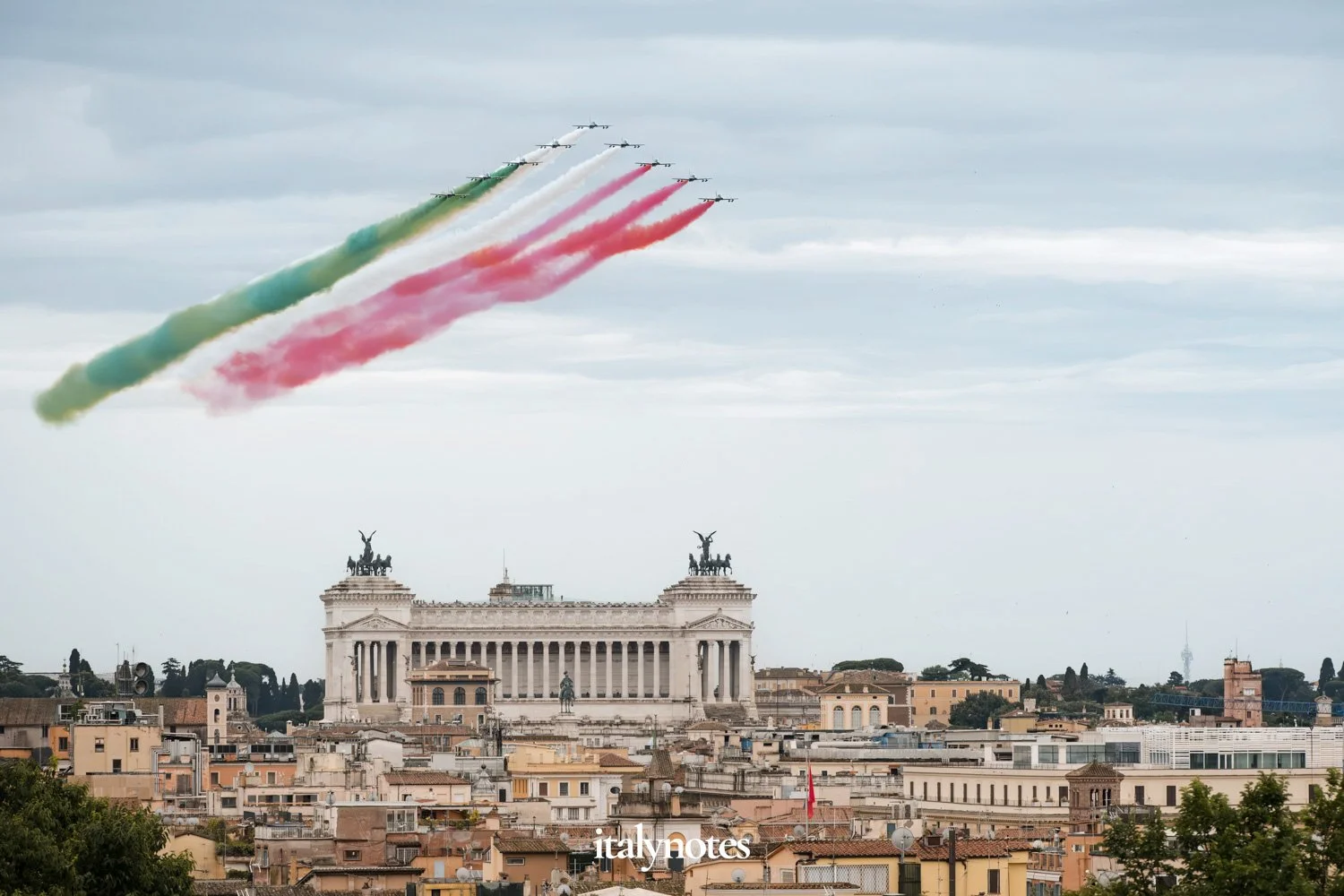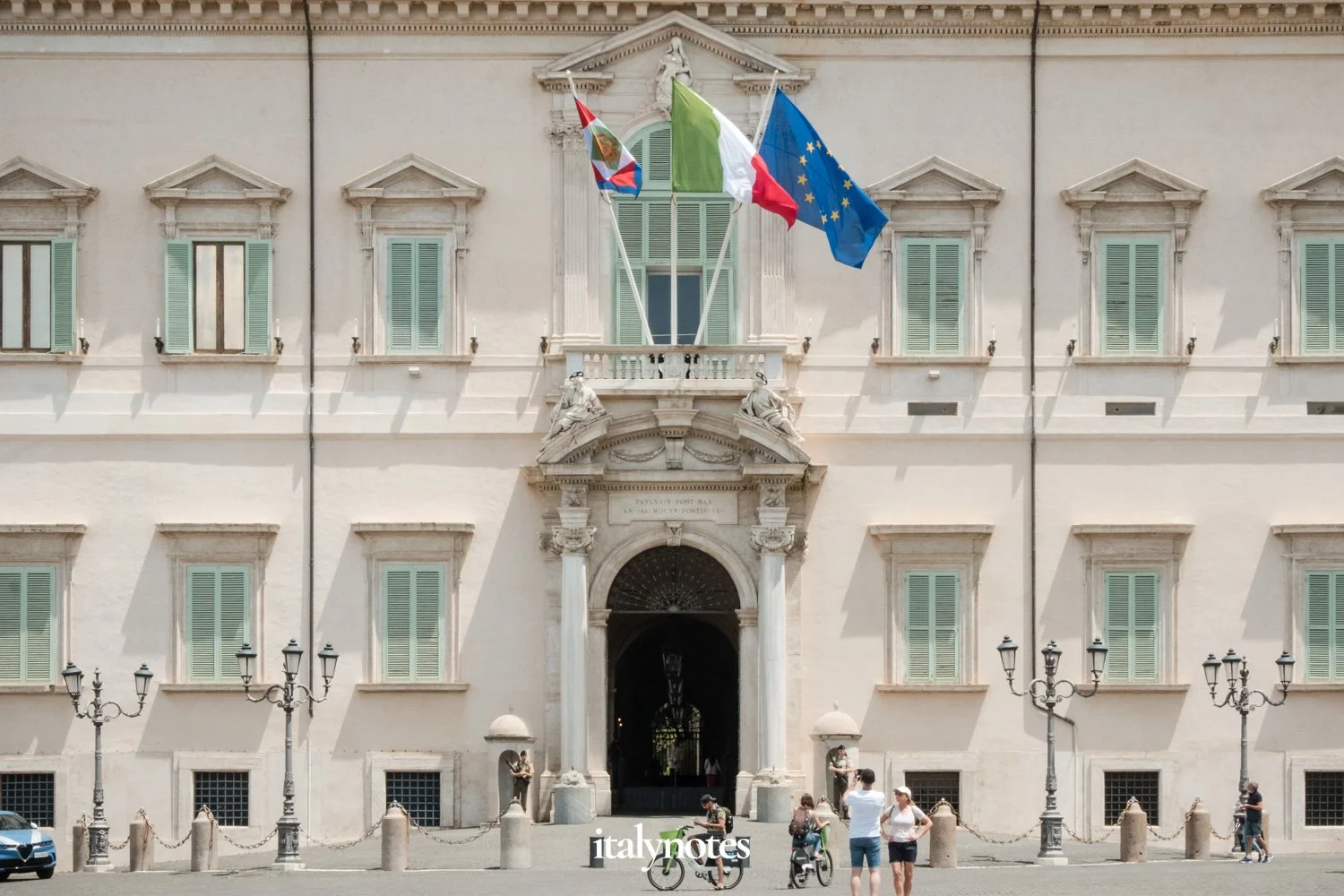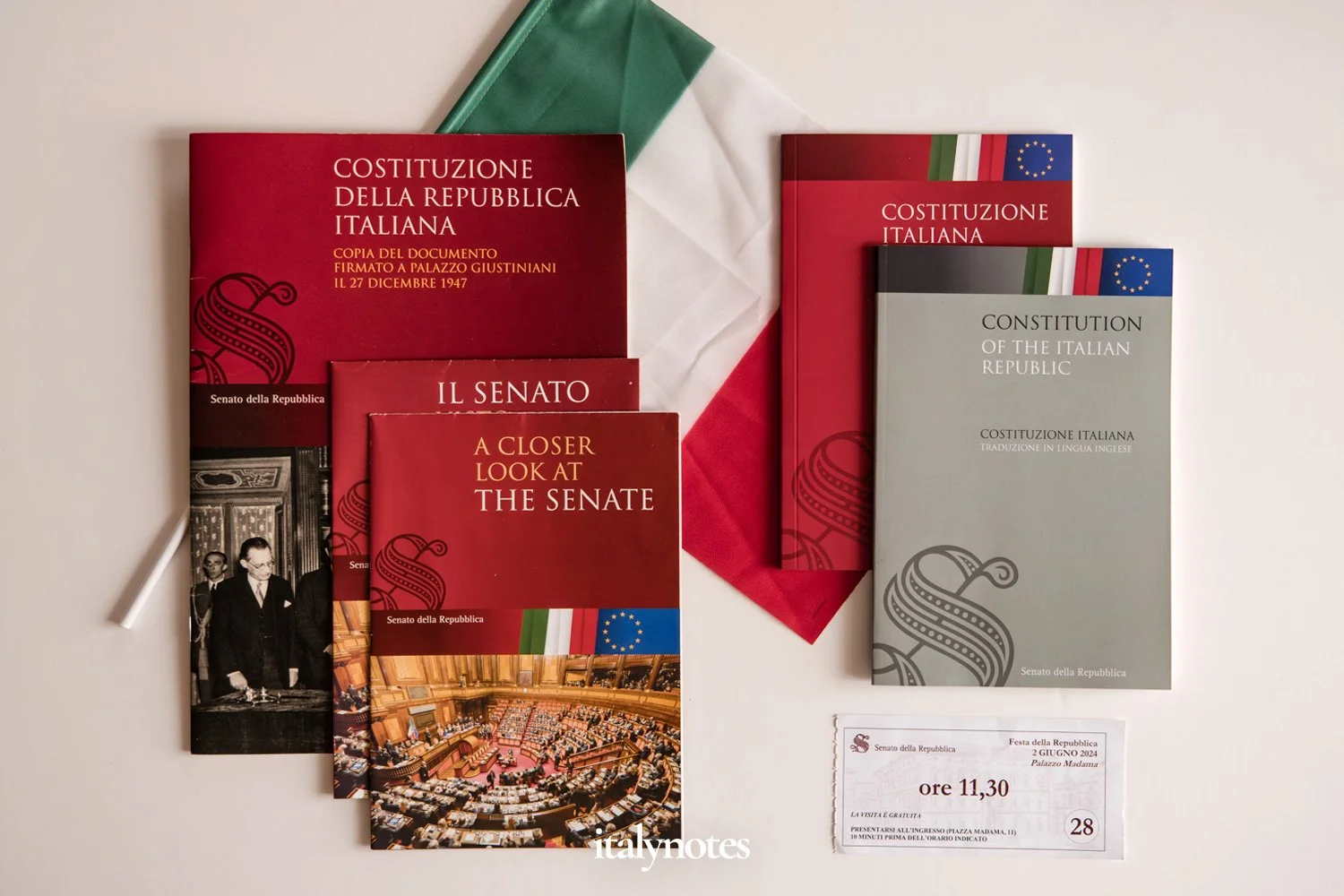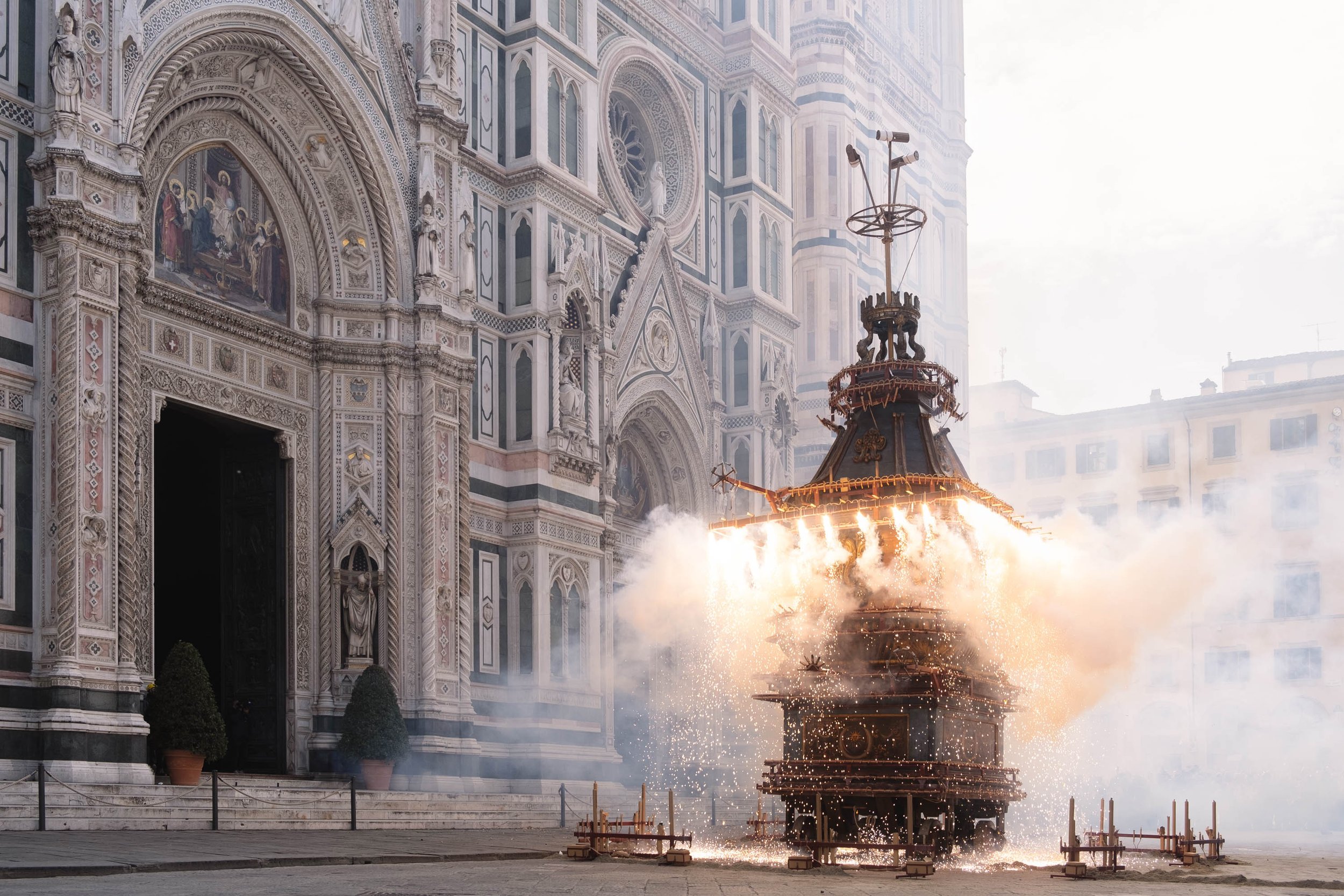Festa della Repubblica Italiana: celebrating Republic Day in Rome
| Last updated: May 2025 |
In 2019, I treated myself to a birthday trip through Puglia. I took the train, and since Rome sat right along the route, I figured to spend a day or two in my favorite city.
It wasn't just a random decision, though. Weeks earlier, I had read about the Scala Sancta, the Holy Stairs in Rome. These marble steps, believed to be the very ones Jesus climbed on his way to Pontius Pilate, have drawn countless pilgrims over the centuries. They ascended them on their knees, leaving behind not just prayers but also visible wear. That's why, back in 1723, Pope Innocent XIII had them covered with walnut wood to protect them.
But in 2019, for the first time in nearly 300 years, the original stairs were laid bare as part of a restoration project. For 60 days, visitors had the chance to climb the exposed marble on their knees again. This unique opportunity was the real reason I stopped over in Rome. I'll share more about visiting the Scala Sancta in an upcoming post.
Arriving in the Eternal City always feels like coming home. I can't fully explain, but ever since my first visit, Rome has had a hold on me. It continues to draw me back time and again. And no matter how many times I return, the city never fails to surprise and amaze me. In Rome, there's always something new waiting to be discovered.
After climbing the Holy Stairs, I headed out for lunch. While I sat down to eat, I scrolled through some notes on my phone, trying to plan the rest of my brief stay in Rome. That's when I came across something I couldn't believe I'd overlooked before: La Festa della Repubblica Italiana. Back then, I didn't know much about Italian national holidays, but missing this one? Luckily, I found out in time — Republic Day was the next day.
In this post, I'll take you through the significance of this day — exploring its history, the official ceremony in Rome, and a few places worth visiting.

|
Festa della Repubblica Italiana |
Birth of the Italian Republic
With Italy's centuries-old history, it's easy to forget that the Italy we know today only took shape about 160 years ago.
For centuries, the peninsula was little more than a patchwork of regions ruled by foreign powers and rival states. But in the 19th century, a wave of nationalism swept through the land. Figures such as Giuseppe Garibaldi, Giuseppe Mazzini, and the Count of Cavour led military and political efforts to unify the country. In 1861, their efforts paid off: the Kingdom of Italy was born, with Victor Emmanuel II as its first king. Yet Rome remained under papal control. It wasn't until 1870 that Italian troops marched in, finally claiming the city and making it the capital of Italy. After generations of division and foreign rule, Italy had finally become one nation.
An equestrian statue of Giuseppe Garibaldi stands at the highest point of the Janiculum Hill, in Piazza Garibaldi.
However, as the years passed, cracks began to appear. Regional inequalities lingered, social unrest intensified, and the monarchy grew increasingly detached from the everyday lives of Italians. The real turning point came in the 20th century when King Victor Emmanuel III of the House of Savoy stood by as Benito Mussolini rose to power. He didn't stop Mussolini's fascist takeover. Instead, he allowed it to happen and remained silent as Italy descended into dictatorship, war, and devastation. A monarchy once meant to unite the country now looked like a passive accomplice to its suffering.
By 1946, Italy lay in ruins. The war was over, fascism had collapsed, and people demanded change. They no longer wanted kings who ruled from palaces and turned a blind eye.
On Republic Day, many government buildings are adorned with (additional) Italian flags. The flag — often referred to as 'il Tricolore' — took its current form in 1946, when Italy became a republic. A year later, it was officially defined in Article 12 of the Italian Constitution: "The flag of the Republic is the Italian tricolour: green, white and red, in three vertical bands of equal size."
So, on June 2 and 3, 1946, Italians were called to the polls for a historic referendum: monarchy or republic? The answer was clear. With 12,717,923 votes (54.3%), the people chose the republic. That decisive moment is commemorated every year on 2 June during the Festa della Repubblica.
And what became of Italy's last king, Umberto II of Savoy? After the referendum, he went into exile in Portugal. In fact, the government banned all his male descendants from entering Italy. That ban remained in place until Italy lifted it in 2002.
Ceremony in Rome
Each year, Rome marks the anniversary of the republic with a solemn and symbolic ceremony. Around 9:15 AM, the event begins with the raising of the Italian flag at the Altare della Patria in Piazza Venezia (Google Maps). Soon after, the president of the Italian Republic lays a laurel wreath at the Tomb of the Unknown Soldier.
The ceremony continues with the performance of the national anthem, best known by its opening line, "Fratelli d'Italia" (Brothers of Italy). The song was already popular during the period of Italian unification. Yet its republican tone clashed with the monarchy established in 1861. As a result, the newly formed kingdom adopted the "Marcia Reale" (Royal March) instead. Only in 1946, when Italy became a republic, did "Fratelli d'Italia" take its rightful place as the national anthem.
You can't miss the huge white monument at Piazza Venezia when you visit Rome. Its official name is the "Monumento a Vittorio Emanuele II," but it's often simply called "il Vittoriano." It was built to honor the first king of Italy. The monument is also commonly known as the "Altare della Patria" (Altar of the Fatherland), though that name technically refers only to the statue of the goddess Roma and the Tomb of the Unknown Soldier. The monument looks especially stunning at sunrise and sunset, when the light gives it a soft rose gold glow.
As the final note of the anthem fades around 9:30, the ceremony hits its peak. The Frecce Tricolori burst through the sky, flying in perfect formation. They leave behind trails of green, white, and red, painting the sky with the colors of the Italian flag.
The Frecce Tricolori first soar over the Colosseum, then continue in a straight line above the Altare della Patria and along Via del Corso. Reaching Piazza del Popolo, they turn and perform a series of maneuvers over the city.
It had been raining all morning, but luckily the rain stopped just minutes before the Frecce Tricolori flew over the city, filling the Roman sky with their green, white, and red trails (2024).
At 10:00, a military parade begins. All branches of the military take part — military and civilian personnel, armed and unarmed units, as well as military bands. They march from the area around the Baths of Caracalla, passing the Colosseum, Via dei Fori Imperiali, Piazza Venezia, and the Circus Maximus before returning to their starting point.
Finally, as the military parade concludes around 12:00, the Frecce Tricolori make one final flyover of the city.
The military parade in front of the Altare della Patria (2019).
Where to go?
In 2025, as in the past two years, all state-run museums and archaeological sites across Italy offer free admission on Republic Day. But what else can you do to make the most of this national holiday?
If you're in Rome, I'd suggest the following: immediately after the official ceremony, head to the Colosseum. There, firefighters will abseil down its walls to unfurl a massive Italian tricolor flag. The flag measures 2,000 square meters and weighs around 3,000 kilograms! An incredible sight you don't want to miss.
Italian firefighters unfurled a giant tricolor flag on the facade of the Colosseum. Seventy firefighters from across the country took part in the operation, including experts from the Alpine Fluvial Speleum (Alpine, River, and Cave Rescue) unit and the National Fire Brigade. They meticulously planned a complex rope system to safely unfurl the flag. Given the weather that day, wind conditions posed a significant challenge (2024).
But there's more to discover in the afternoon. From 15:00 to 19:00, the gardens of the Palazzo del Quirinale (Google Maps), the residence of Italy's president, are open to the public for free. I haven't had the chance to visit myself yet, but I've read that the gardens come alive with music performances by bands from various branches of the military.
Some lesser-known places that open their doors for Republic Day include Palazzo Giustiniani (Google Maps) and Palazzo Madama (Google Maps). I visited Palazzo Madama last year (2024), and if you're into politics like I am, you'll love it too.
Palazzo Madama is home to the Senate of the Italian Republic, the upper house of Italy's Parliament. When I visited, we had to hand in our phones and cameras at the entrance. This means that, unfortunately, I couldn’t take any photos. Once everyone had turned in their devices, we enjoyed a guided tour through the building. We moved through room after room, each with its own fascinating story and stunning decor.
Palazzo del Quirinale, the official residence of the President of the Italian Republic.
The most interesting room was the Legislative Chamber. This room is where Senators sit, arranged according to their parliamentary group, from left to right, facing the president's bench. Above that bench, two plaques mark key moments in Italy's modern history. One has a quote from Victor Emmanuel II's speech to the Chamber of Deputies back in 1871. The other commemorates 2 June 1946 — the day Italians voted to become a republic instead of a monarchy.
The tour lasted about 45 minutes, and it was great! It gave a rare look into the heart of Italian politics. In the end, we received a gift bag that included the Italian Constitution in both Italian and English — a fitting souvenir!
The contents of the small gift bag given to all visitors after touring Palazzo Madama. Unfortunately, the flag ended up a little wrinkled.




















